The best wildlife camera can offer you a fascinating insight into the comings and goings in your garden, come day or night. Want to see what your garden critters are getting up to? These nifty gadgets offer such possibilities, whether it's to keep an eye on feathered friends at a bird box or feeder in your garden, or some more nocturnal visitors, be that foxes or hedgehogs.
"Wildlife cameras are increasingly clever and compact, affording us a great view of garden goings-on," states Modern Gardens contributor, Geoff Hodge - editor of Garden News magazine and author of several successful gardening books. "You could see eggs hatching and baby birds being raised by hectic parents via a nestbox cam. Discover who's visiting your garden at night (and which neighbourhood cat is the poop culprit!) with a garden or trail cam. Or, if you have hedgehogs visiting your outside space, how about a hog-house cam to watch the snuffly shenanigans?"
Best wildlife cameras at a glance:
More affordable than ever before and, as Hodge explains, more compact than ever, we could all find a small spot for a wildlife camera in our outside spaces. "Trail and garden cams can be positioned anywhere in your garden. Most are unobtrusive and remain on stand-by mode until triggered when something passes in front of the passive infrared (PIR) sensor. The best cameras have multiple PIR sensors at different angles to capture movement across a wider field of view. They take colour images in daylight, and the majority switch to black and white images after dark, using infrared light that won't scare animals," says Hodge.
Depending on the model you opt for, you can look forward to still images and video footage. "When triggered, they capture a few still images, moving video images, or both, which are saved to an SD memory card – the same kind found in most digital cameras – while Wi-Fi-enabled models also allow you to view the action live. Most trail cams are operated by batteries, and these should last well because the camera is only active for a few seconds at a time. Some models have solar panels to recharge the batteries, while some larger garden cams need mains electricity". So, if you fancy indulging your inner Attenborough, here's a superb selection of the best wildlife cameras to shop.
Best wildlife cameras for your garden
Best overall wildlife camera
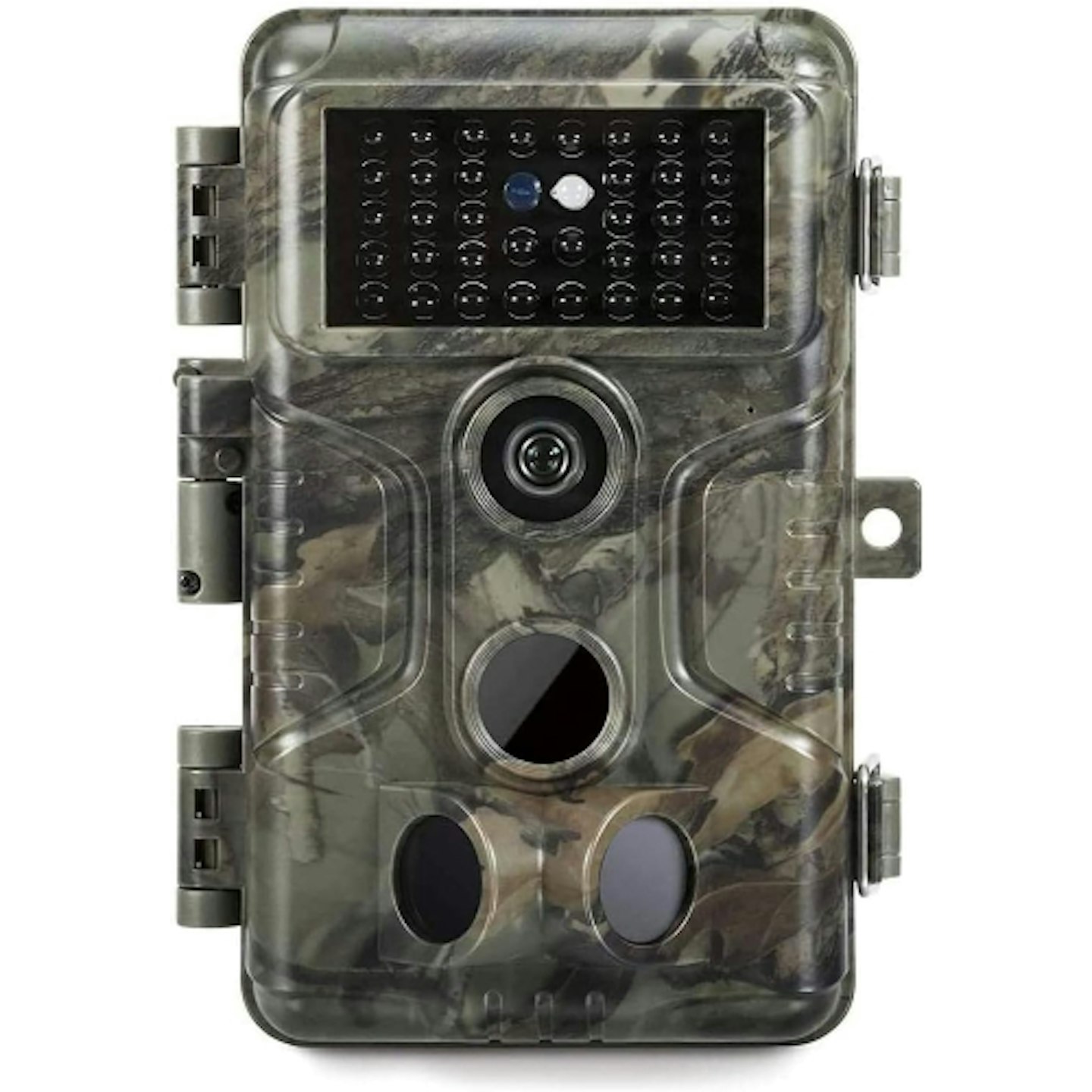 Gardepro
Gardepro This GardePro option consists of a box-shaped camera that you can position in an optimum spot in your outdoor space with the supplied strap, making it ideal for going around a tree or a fence post. It has three capture modes: photo, video, complete with audio, or both, which start when motion is detected in trigger zones. One reviewer says the sensors are so good it can even pick up on woodlice movement.
Thanks to some clever tech and a Sony Starvis image sensor, it can produce colour images even in low-light conditions and offer clear night vision in total darkness. All footage is saved to an SD card (not included). This has a fast trigger speed and can produce up to 32-megapixel images while video is high-quality H.264 1296p format.
You control this camera via the remote-control style buttons behind the flap-open front before securing it closed with sturdy clips. This camera is battery-powered and quite thirsty, requiring eight AA batteries, but they will offer you a standby period of up to eight months.
Pros
- Up to 27-metre motion detection distance range
- Ability to create operation hours in the settings
Cons
- Batteries and SD card need to be purchased separately
Best solar-powered wildlife camera
 Ceyomur
Ceyomur If you're planning to place your wildlife camera within 10 metres of your home, you can enjoy the convenience of this Wi-Fi-connected option. This offers you a 24/7 stream of your garden with a companion app to view the action on. In addition to the streaming, you can capture both photos and video. Photos can be up to 46 megapixels, while video is 4K quality captured at 30fps.
It is solar-powered, making it an even more attractive choice. Although four AA batteries can be added as a backup power source, reviewers describe the solar power as reliable.
The camera comes with both a strap and a mounting bracket, giving you flexibility in positioning it. It has three motion-sensitive sensors, all of which give you a 120-degree view. You can disable the two side sensors for a more precise 60-degree view. The camera leaps into action after just 0.1 seconds of detecting motion, so you can be sure you'll capture all the action.
Pros
- Wi-Fi connectivity with a companion app
- Waterproof to IP66 rating with robust rubber seals
Cons
- Wi-Fi connection has limited range
Best wildlife camera for TV viewing
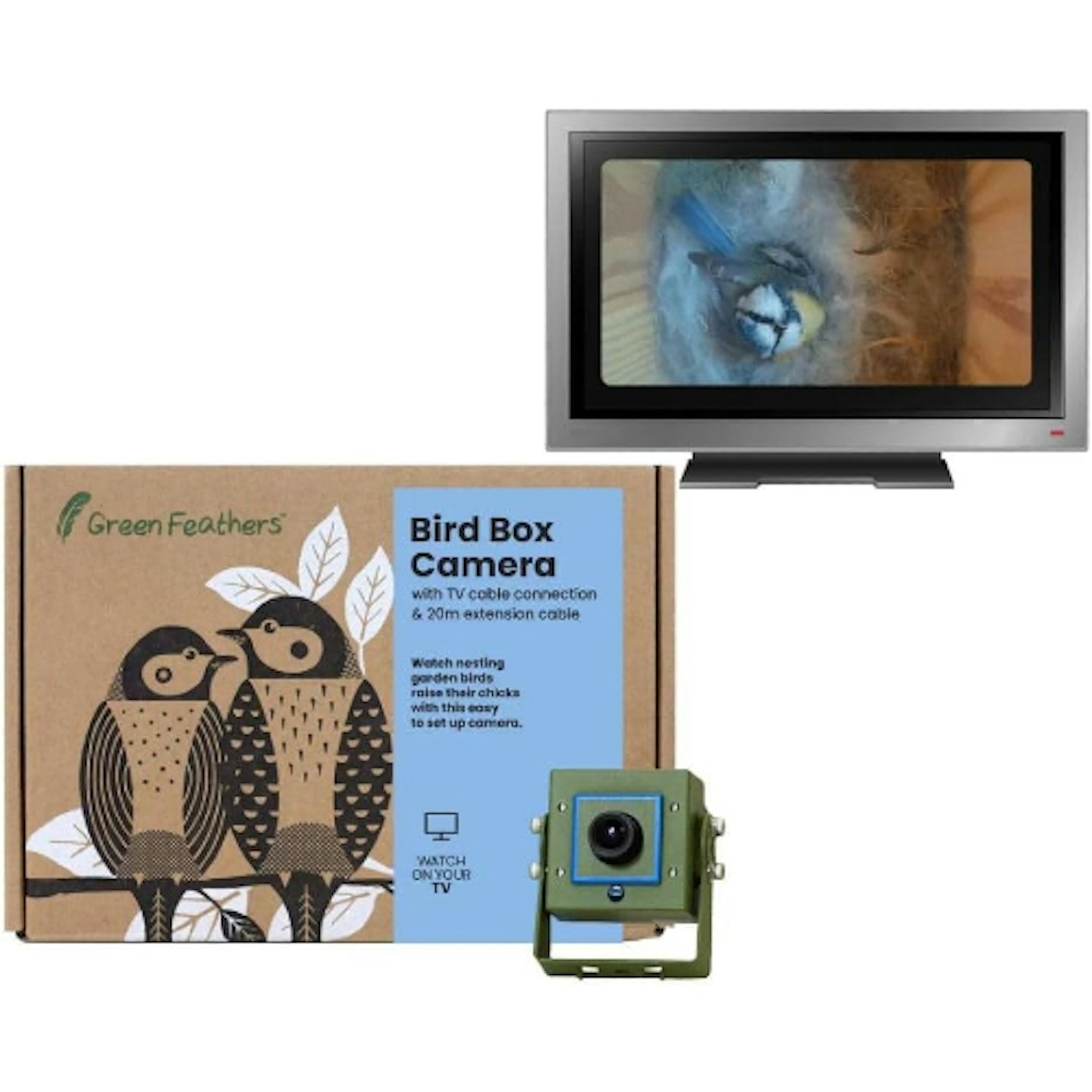 Green Feathers
Green FeathersBristol-based Green Feathers offers a simple solution designed especially for watching birds nesting and, hopefully, chicks hatching and feeding. A great solution for anyone not au fait with Wi-Fi connectivity and companion apps, this is a classic wired bird box camera that sends a live feed of the box directly to your television.
The tiny camera sits inside the box, and then you run the 20-metre video and power cable to your TV, where it plugs into RCA/phono inputs to send the signal to your set. This makes this a solid connection without the need to worry about the connection dropping out, allowing you to see and hear the box in colour during daylight and, thanks to IR technology, through night vision when the light drops.
Reviewers report being pleased with the image quality and delighted with the ability to get such an up close view of avian action. One happy user got to see eggs hatching and then enjoyed watching the parents feeding the hungry chicks. This is designed for bird box use, but could also be placed in a hedgehog house.
Pros
- Wired design ensures a steady connection 24/7
- Infrared sensor for night time viewing
Cons
- Live-stream only, no recording capabilities
Best birdhouse wildlife camera
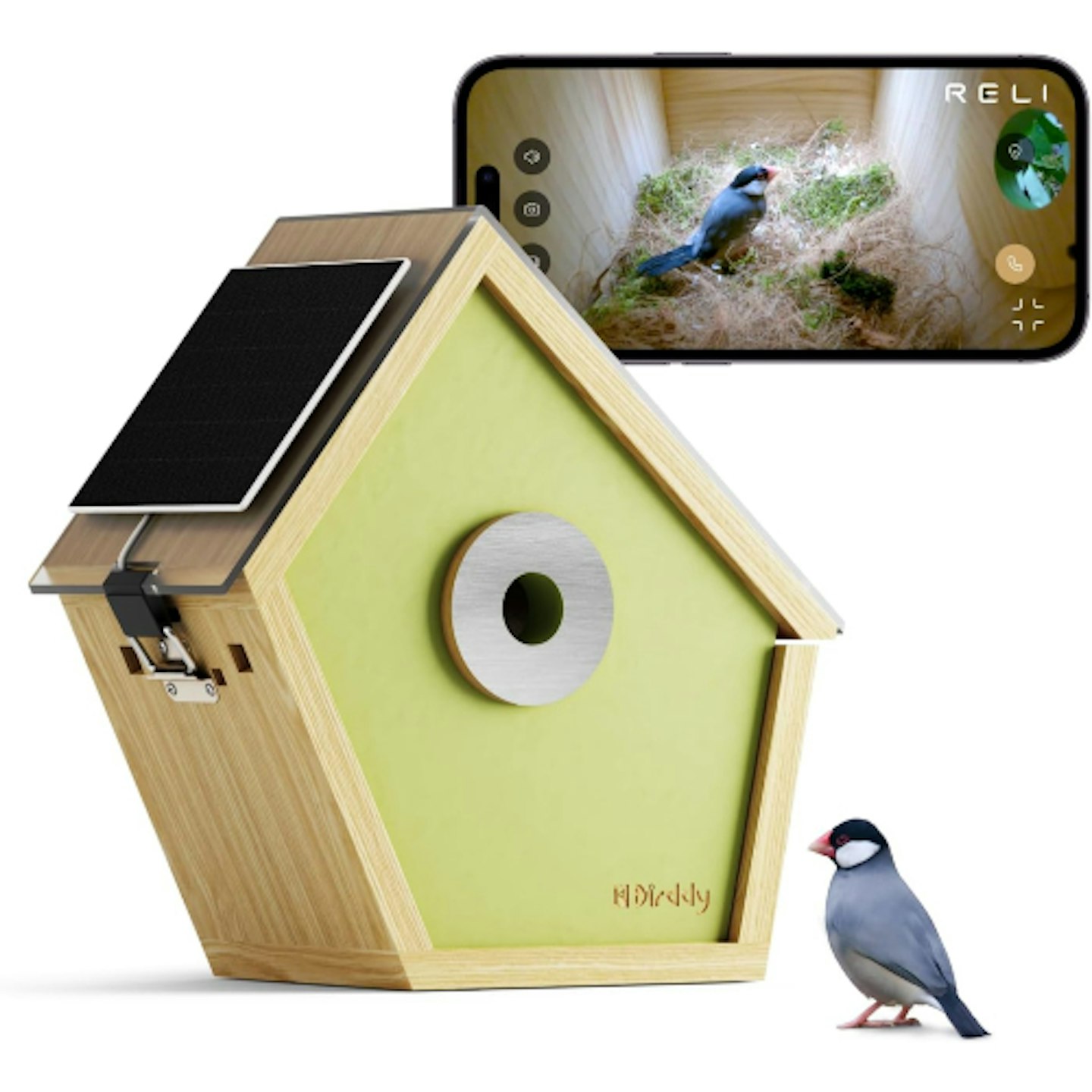 Reli
Reli www.ebay.co.uk
Reli's Birddy Smart Birdhouse is a high-end option that's ideal for hard-core twitchers. The set-up comprises of a bird house, a camera, and a powerful solar panel that requires just three days' sunlight a month to continue working. Along with the Birddy companion app, you can view a 24/7 live stream of the action inside the house and capture footage of the shenanigans.
The bird box itself is made from eco-friendly pine wood, offers ventilation openings for airflow, internal grooves for fledglings to use to exit the box, and a built-in drainage system that keeps the interior dry, even during bad weather. It has five entrance sizes to accommodate different bird species. A wall mount is included, but you can also purchase a Reli pole mount and strap mount.
The Reli companion app is very advanced. It can send you notifications when birds visit the box, create time-lapse recordings, and allows you to share what you've captured with others. There is even integrated, interactive AI that recognises the bird species, and ChatGPT - great for younger birders - that means they can start bird-related conversations and ask bird-related queries.
Pros
- Camera integrated into an attractive birdhouse
- 24/7 live streaming footage from inside the house
Cons
- Only supplied with a wall mount fixing option
Best bird feeder wildlife camera
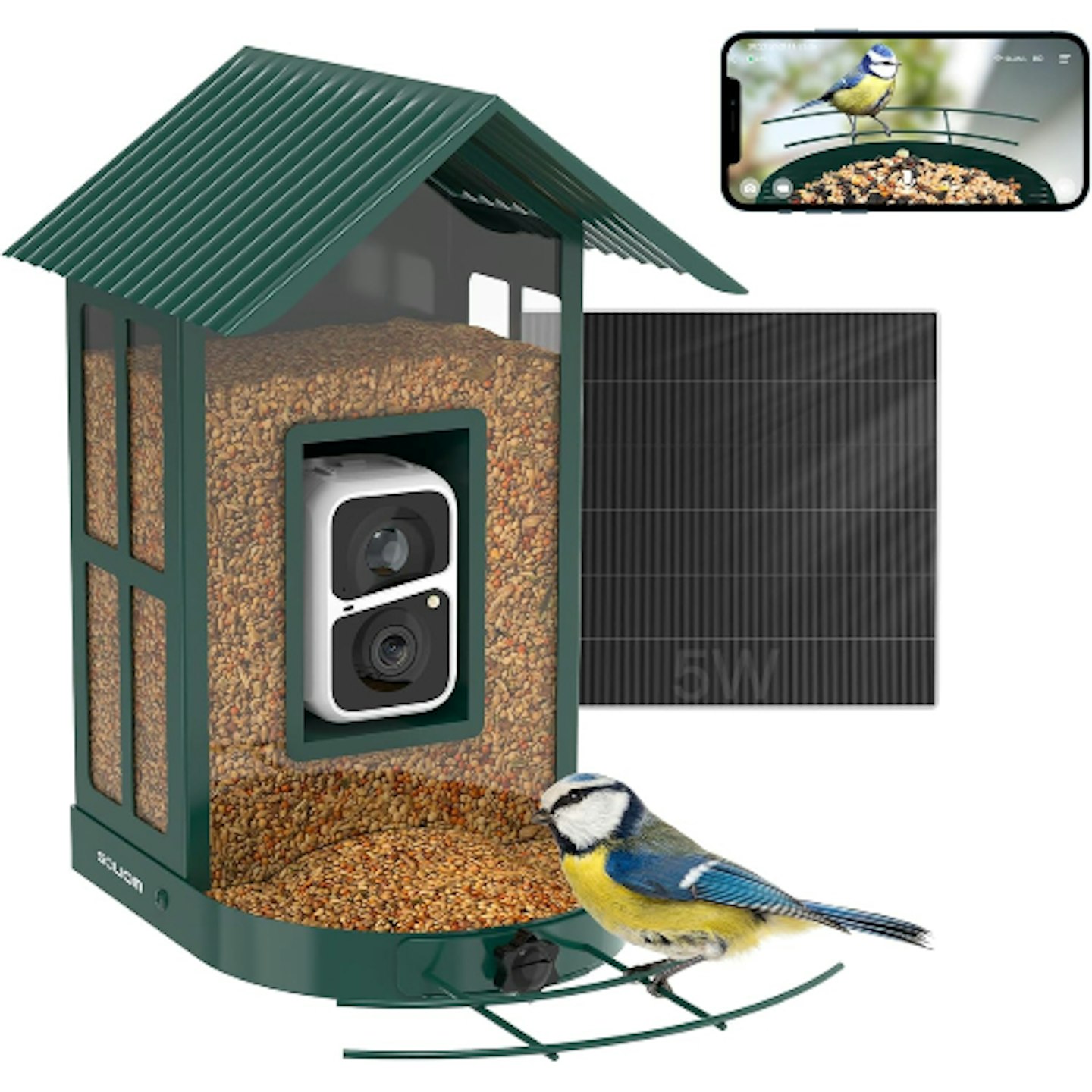 Soliom
SoliomFor anyone that wants to reward their garden birds for providing free entertainment, a bird feeder cam is the way to go. Adding food into the mix also makes it more likely you'll see quick results, unlike bird box cameras, which, although awesome, can take some time to attract residents. SOLIOM's BF08 is a strong choice thanks to its solar power, Wi-Fi connectivity, and Soliom Pro app that shows you all the action that's taking place on the feeder.
The IP65 waterproof feeder is comprised of a sturdy metal case with a transparent acrylic container that has a generous 2.7-litre capacity, meaning less trips to fill it up and risk scaring off the birds. This is another solar-powered option, coming with a separate solar panel, which means you can choose to place it in the sunniest spot nearest to the feeder's location.
This set-up will send you instant notifications to your phone when a bird lands in front of the camera, while the advanced AI algorithm integrated into the app will identify the species if it's not one you recognise. Thanks to the IR tech, this offers streaming, both day and night, and you can capture footage and share it. There's even the option to talk through the camera - a great feature for scaring off pesky squirrels.
Pros
- Advanced AI algorithm identifies more than 10,000+ birds
- Separate solar panel to be placed in an optimum spot
Cons
- Not lightweight, so you need to ensure it's securely mounted
Best compact wildlife camera
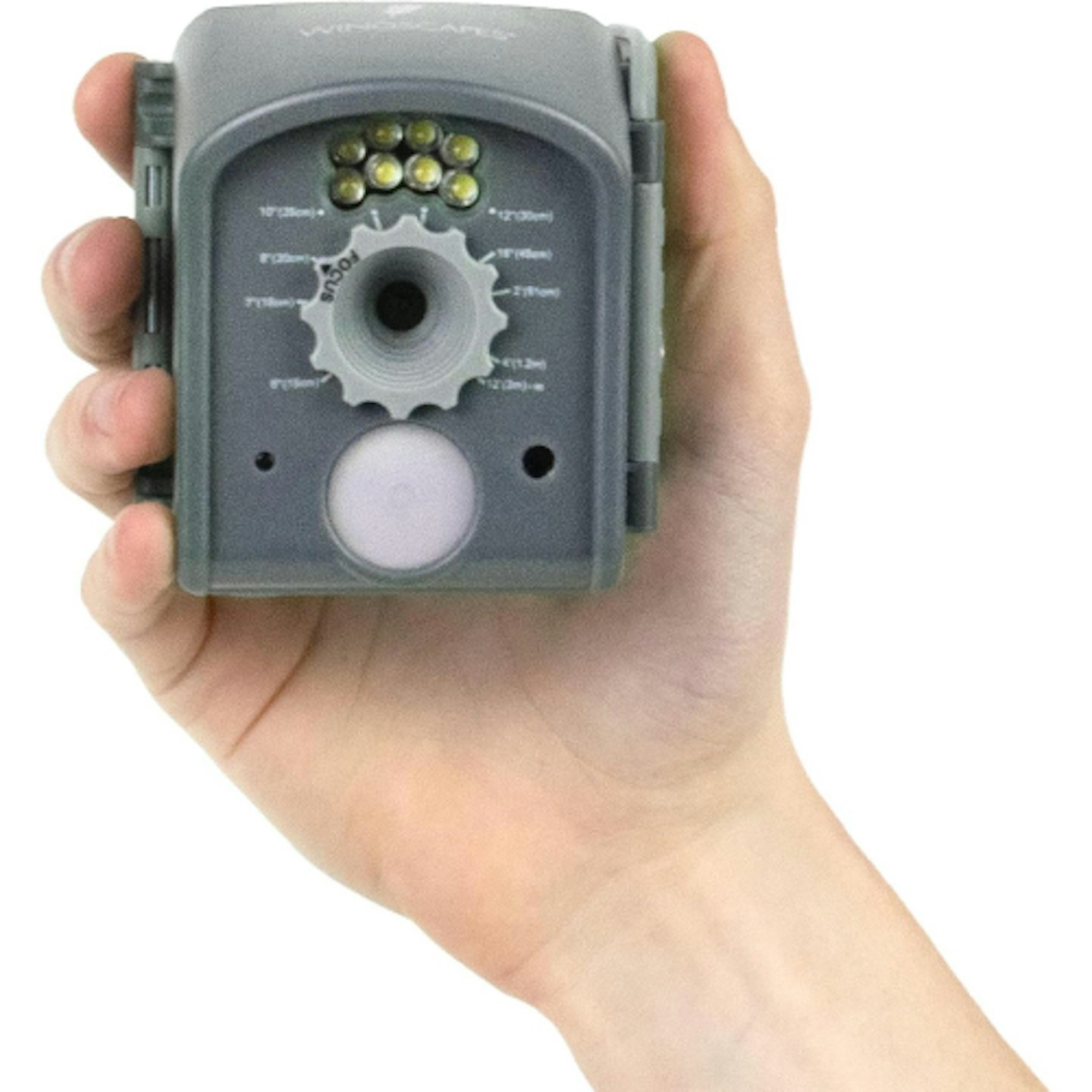 Jacobi Jayne
Jacobi Jayne If you want a small and unobtrusive wildlife cam that you can subtly place in your outdoor space, Jacobi Jayne Smart BirdCam is just that. It measures in at a diminutive 8.2cm by 8.8cm and comes with a sturdy, adjustable strap to mount it on a tree trunk or fence post. Once in place, this captures all the outdoor action and saves it down to an SD memory card for you to review later.
This camera is waterproof and powered by four AA batteries with each set of batteries capable of powering the camera for up to 13,000 images. This camera has an adjustable lens so you can change the focus to better capture the wildlife you're interested in. The focal lengths range from 15cm, which is great if you're placing it near a bird table, up to 20 metres, to capture a longer view.
The BirdCam's infra-red motion detector ensures this will work overnight, and starts recording within a fraction of a second, meaning you'll be able to find out who, or what, is visiting your garden when it's dark. The small size and portable nature of this camera is great for anyone who wants to see what's going on in different areas of their outside space - it's a quick and easy job to demount it and set it up in another location.
Pros
- Lens with adjustable focal lengths
- Night vision footage is captured in colour
Cons
- No live viewing capabilities
Best wildlife camera for remote monitoring
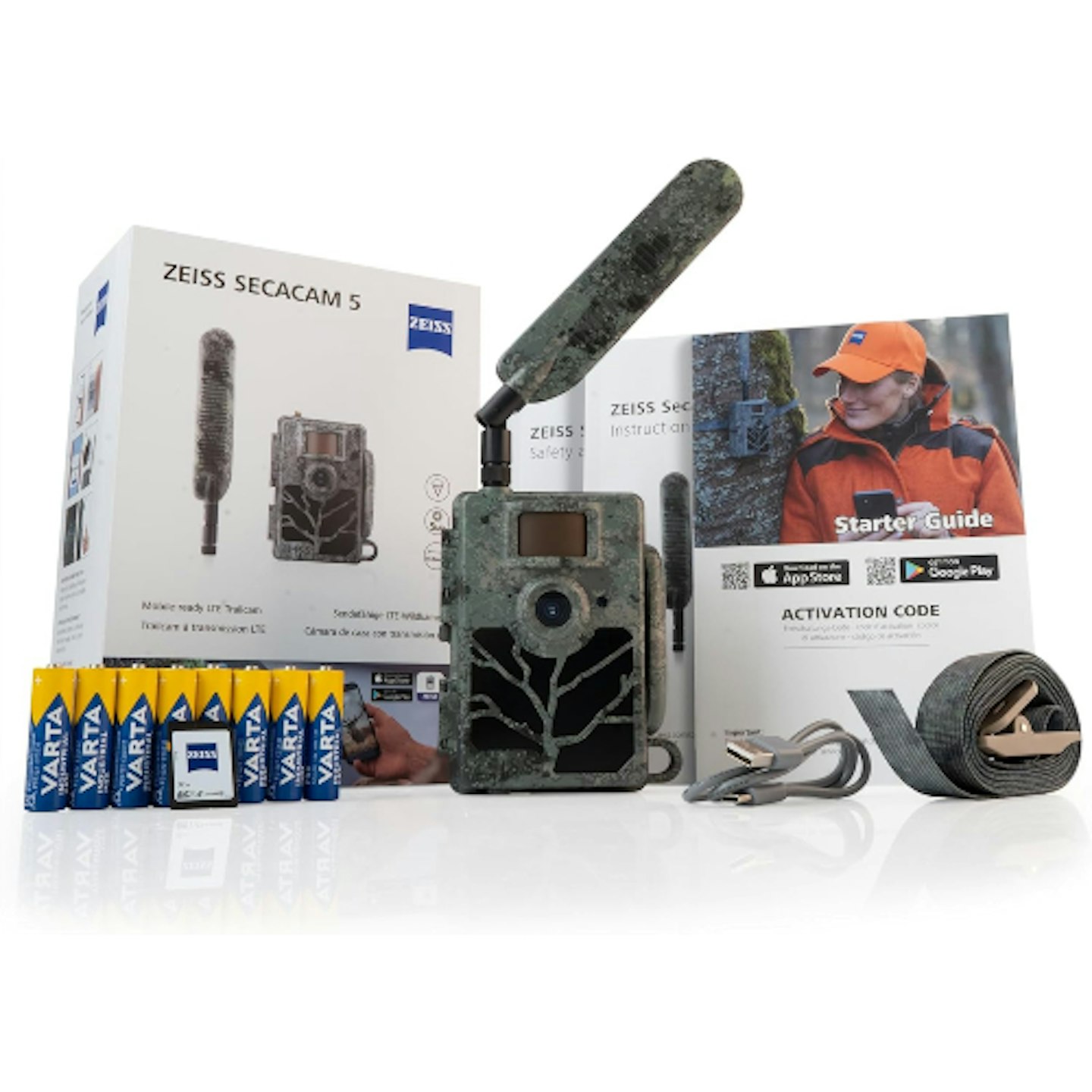 Zeiss
Zeiss Anyone who is serious about watching wildlife away from their garden needs to consider a camera that can be operated remotely. The ZEISS Seacam 5 takes a 4G SIM card and has a separate 4G antenna, so it will work anywhere you can get a mobile signal. Do bear in mind that this requires a ZEISS subscription plan with various packages available.
This trail camera is super-rugged and will withstand any weather you can throw at it. It boasts an IP rating of 66 which means it's safe from dust and all kinds of precipitation. The Seacam 5's lens is designed for anti-glare in the day and sharp, well-lit night vision shots in the dark. Once you get this set up, it will send HD photos and videos straight to the companion app on your smartphone.
If you're worried about leaving an expensive bit of kit in the wild, be reassured the camera has GPS built in, a lockable body, and even a digital pin to protect it. The app can monitor the camera's battery life, send alerts to live camera action, and use AI to detect and identify animal species. That battery life comes from eight AA batteries which are included in the set up kit.
Pros
- Comes as a kit complete with SIM, SD card, and batteries
- Weatherproof to a robust IP66 rating
Cons
- SIM card requires a subscription plan from ZEISS
How we chose the best wildlife cameras
All of these wildlife cameras have been hand-selected by our team of Modern Gardens shopping experts. We carefully considered the type of wildlife they are designed to capture imagery of, their tech specs, and weather resistance in our selection of the best. Our team has spent hours investigating and researching all types of wildlife cameras to make it easier for you to find the very best, and we'd never recommend a product we don't believe in.
Where possible, we also test and share the latest and best products you should know about. And with help from Modern Gardens Magazine, Garden News and Garden Answers, we share expert gardening knowledge to help you get the most from your product.
Wildlife camera jargon explainer
We've used some relatively technical terms when describing the qualities and capabilities of these wildlife cameras. Here's a quick run down of what they all mean...
AI - Some of these camera's companion apps boast AI - artificial intelligence - capabilities that can help identify different animal and bird species.
FPS - Stands for frames per second, the more frames per second, the smoother the footage will be. 30fps will be adequate for everyday wildlife video capture.
H.264 - The most widely used video compression standard that you will be able to view and share across all platforms.
IP rating - An Ingress Protection rating is a measure of weatherproofing and dustproofing in all kinds electrical tech.
IR - Infrared is sent in invisible waves from the camera and enables night vision.
PIR sensor - These sensors detect infrared energy emitted by moving objects and activate the cameras.
RCA/phono inputs - These are now quite dated cable ports on the back of your TV. If your TV doesn't have them, you can easily get RCA-to-HDMI converters.
SD card - A type of memory card that your camera will save video and images to that you can then put in a reader (or if you have a port, directly in your computer) to access the saved files.
Viewing angle - Simply what the camera's lens will be able to "see". The higher the number, the wider the angle. This can all be described as "Field of View."
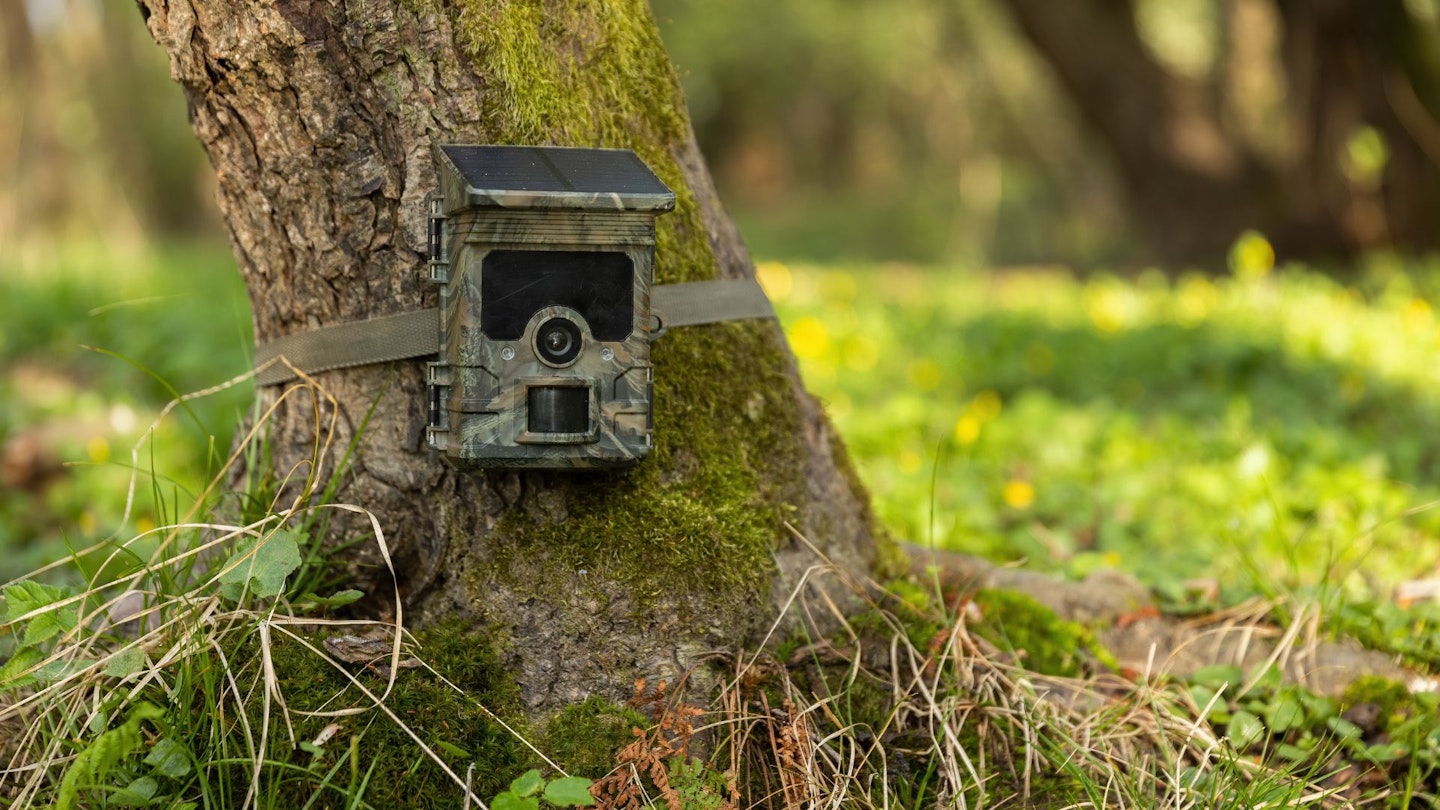
Where should I place my wildlife camera?
This obviously depends on what kind of camera you're buying, and what you want to capture footage of. If you just want an overall view of your outside space to see what your wildlife visitors are up to, place the camera high up and pointing down for a garden overview.
Anyone opting for a solar-powered wildlife camera needs to ensure the panel is exposed to as much sunlight as possible in order to enjoy maximum charge, as you would with garden solar lights.
If you're particularly interested in ground dwelling creatures, such as foxes, badgers, and hedgehogs, you'll get a better view, and the motion sensors will work better, if you place it lower to the ground. For example, the GardePro wildlife camera we're featuring is recommended to be placed at a height of 50cm to a metre off the ground.
Some of these cameras only come with straps, so you need to ensure you have a suitable tree trunk or fence post, others offer wall mounting capabilities. These can be drilled into a wall, fence, or even placed on the side of a garden shed.
Bird box and hedgehog house cameras obviously need to go inside the box, ensuring this leaves enough room for the critters to get comfy. Never install a bird box or hedgehog house camera while the creatures are nesting as you will disturb them. Always ensure the box is uninhabited before you set the camera up.
What can I expect to see with a wildlife camera?
Who knows? Whatever, it will be fascinating! Why not set one up to find out…?
What to read next:
Best bird table to encourage wildlife to flock to your garden
Subscribe to Modern Gardens magazine and get the most out of your outdoor space. Discover everything you need to know to make your outside space look fantastic, quickly and easily, with hundreds of simple ideas, designer tricks, affordable products and expert advice in every issue of Modern Gardens. View our latest subscription offers to save on shop prices.
Amy-Mae Turner is a Commerce Content Writer for Modern Gardens, Yours, Take A Break Pets, and A Modern Kitchen. When she's not pottering in the garden or mucking around in the kitchen, she can be found having doggy cuddles with her two beloved cockapoochis.
